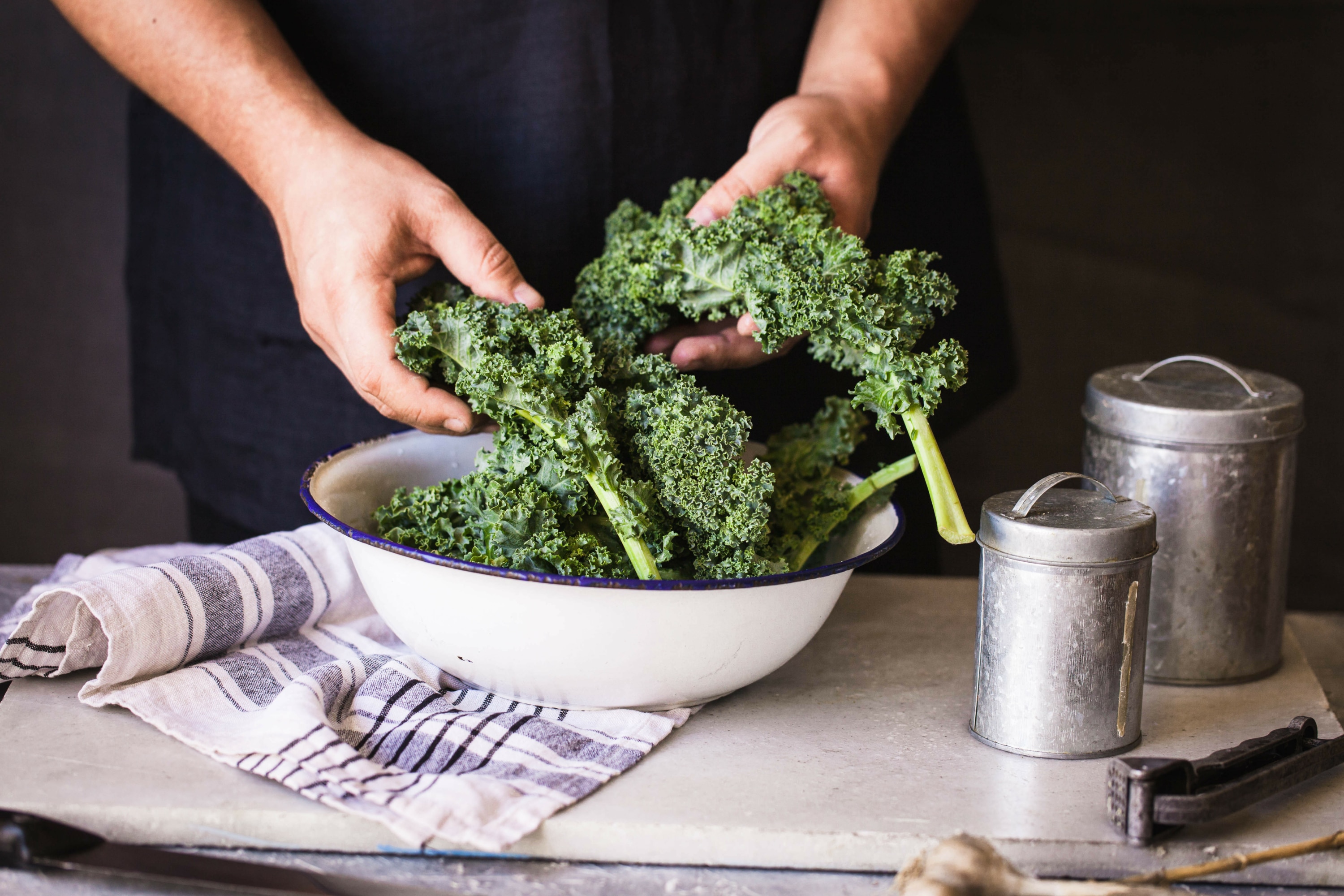Osteoporosis is the most common chronic metabolic bone disease and it often goes undiagnosed and undetected until you unexpectedly fracture a bone. The disease affects men and women and its occurrence is rising. The costs of preventing or not treating osteoporosis are high. Patients often experience extreme complications after one year of major fractures as a result of osteoporosis.
The disease is preventable and manageable though. Although there are some pharmaceutical treatment options available, like all medications they come with side effects. These medicines also treat the disease after a diagnosis, but are not preventative. A holistic approach to osteoporosis includes both prevention and treatment through diet and exercise.
In this article, we provide ten ways to help prevent or treat osteoporosis holistically.
Get Calcium, Vitamin D, and Vitamin K
We think of our bones as solid and rigid, but they are very much a dynamic and metabolically active tissue in our bodies. The primary pathway for creating and breaking down bone mass involves two types of cells: osteoblasts and osteoclasts. Along this pathway many interactions can occur that influence the balance between the amount of calcium in our bones and our blood.
We need calcium to carry out a variety of functions like making our muscles contract. When our bodies need more calcium available in our bloodstream, it gets pulled from our bones. But our bones need calcium to maintain their strength, so maintaining a balance between blood levels and bone levels is crucial to maintaining overall health.
Calcium is the most important mineral for creating and maintaining bone mass and maintaining that bone-bloodstream balance. In order to absorb calcium, the body requires vitamin D. Mushrooms are an excellent source of vitamin D. Aside from some supplements, they are the only plant-based source. Wild salmon is another excellent Vitamin D source. On average, wild salmon contributes 988 IU of vitamin D per each 3.5 ounce (100-gram) serving, which is 165% of RDI. Some studies have found as much as 1,300 IU of Vitamin D per serving in wild salmon. Including wild-caught salmon and mushrooms your diet can help ensure you get an adequate amount of vitamin D. Sun exposure and supplements are options as well.
Vitamin K is also a vital part of the process of bone formation and maintenance. Vitamin K helps prevent calcium loss. Dark leafy greens, such as kale and spinach contain vitamin K, as do cruciferous vegetables, such as broccoli, cabbage, and brussels sprouts. Sauerkraut, soybeans, edamame, pickles, pumpkin, pine nuts, and blueberries also contain vitamin K.

Get Your Free Guide
Learn How to Start a Fulfilling, Impactful Career as a Holistic Health Coach
You’ll learn:
- Why holistic health matters
- If holistic health coaching is right for you
- What career opportunities exist for health coaches
- And more!
Get Enough Trace Minerals
Zinc, magnesium, and boron each play a role in bone health and the great part is that you don’t need much of them. They are called trace minerals because a small amount will suffice, but they are still vital to our health.
Magnesium works in tandem with vitamin D by activating it so that it can do its job of making calcium more bioavailable. When taking supplemental magnesium, look for magnesium chloride, magnesium lactate, or magnesium aspartate, all of which are more bioavailable than other forms of magnesium. Similarly, zinc works like vitamin K to help prevent calcium loss and promote bone formation. Zinc is also a major component of bone structure. Like both magnesium and zinc, boron is essential to bone formation and vitamin D absorption. Ensuring that you have enough of these minerals in your diet is crucial for overall bone health and osteoporosis prevention.
Find zinc in these foods:
Legumes
Nuts
Whole grains
Dark Chocolate
Tofu
Hemp seeds
Shiitake mushrooms
Find magnesium in these foods:
Whole wheat
Spinach quinoa
Almonds, cashews, peanuts
Dark chocolate
Black beans
Avocados
Tofu
Find boron in these foods:
Raisins
Almonds
Hazelnuts
Dried Apricots
Peanut Butter
Brazil Nuts
Walnuts
Red Kidney Beans
Keep Supplements Supplemental
Whole foods are the best option for getting all your nutrition needs met. Be sure to choose the supplements you take wisely and consider what your nutritional needs are as well as what types of supplements are best for you.
It’s important to keep in mind that the trace minerals are only needed in small amounts, and that supplements are not always the easiest, most bioavailable method of ensuring your body has enough of these bone components. Always take supplements with the guidance of a professional.
Maintain Fatty Acid Balance
Bones are not only for calcium storage. They store fats too, which is why maintaining a healthy balance between the different types of fatty acids is important for preventing osteoporosis and bone degradation. Strive for at least a 4:1 ratio of Omega-3 to Omega-6.
The Omega-3 you consume can come from plants too. In fact, research reported that plant-based Omega-3 shows promise of helping bone maintenance by preventing calcium from leaving bones and entering the bloodstream.
Eat more vegetables
Ensure that you get enough calcium, vitamins D and K, zinc, magnesium, and boron by eating a variety of whole vegetables.
Include dark leafy greens, such as the aforementioned kale and spinach. Add chard and collard greens to that list too.
Other green vegetables also top the list of bone-friendly eats because of their high vitamin and mineral content, such as broccoli, brussels sprouts, green beans, and soybeans.
In addition to these vegetables, also consume tomatoes, tomato juice, winter squash, sweet and white potatoes, cauliflower, and green and red peppers. These foods add vitamin C to your diet, which helps stimulate the cells that make bones grow.
Aside from the minerals and vitamins that vegetables contribute to a diet designed to prevent or treat osteoporosis, they also contain healthy fiber and are part of an overall healthy and preventative diet.
Include Weight-Bearing and Strength Training Exercise
Weight-bearing exercises that focus on building muscle are often overlooked as important. Of course, walking, jogging, swimming, and other activities that get you moving and get your heart pumping are a welcome addition to your healthy lifestyle. But for healthy bone maintenance and osteoporosis prevention and treatment, you need to build and strengthen your skeletal muscles.
Strength training does not mean you have to bulk up. In fact, maintaining a healthy and stable weight is another action on this list. Including weight training three days a week is all you need.
That’s also why weight-bearing exercise is important. Activities like yoga and exercises like squats, push-ups, and sit-ups help strengthen key large muscle groups and do not require any extra heavy lifting. The idea is to continuously be able to comfortably and stably support your own body weight throughout your lifetime. Doing so not only helps strengthen bones, but also helps protect your bones from falls and can help avoid fractures.
Consume Vitamins and Minerals Regularly
Including these foods into your diet works best when you maintain the habit.
Like we mentioned at the start of this article, bones are metabolically active. Throughout the day, your bones are constantly absorbing and releasing calcium.
In order to keep up with your bone’s demand, you need to ensure that the minerals are readily available and on hand. Eating a variety of vegetables throughout the day and across all your meals and snacks is the best way to ensure that you have a steady supply of the building blocks that your body needs to maintain healthy bones and prevent osteoporosis.
Consume Enough Calories
In line with regularly consuming vegetables, you want to ensure you are eating enough protein and enough calories overall. Undereating, even as part of a weight loss program, can result in weak bones. Remember, bones are dynamic. Our bodies will break them down and use their fat and calcium stores when we do not consume enough calories.
Similarly, if we eat too little protein or too much protein, we risk causing bone density to drop. For someone trying to prevent osteoporosis, eating a balanced diet with enough calories is important. It’s even more important for someone diagnosed with osteoporosis.
Maintain a Stable Healthy Weight
If your bones are already porous and frail, one of the best things you can do for them is to safely return to a healthy weight and maintain it. That applies to being underweight or overweight too.
Fluctuations in your weight can influence bone density as previously described because of the role bones play in caloric storage of fats and mineral storage of calcium, which our muscles need too. It’s possible to not be able to recover from the bone loss that can happen during rapid weight loss.
Being overweight increases the stress on our bones, which can increase risk of fracture with osteoporosis.
Start Now, Don’t Stop
The best part about all of these dietary suggestions and exercise habits is that you can start them at any time during your life. Starting young is great. But do not despair if you are developing new habits at any time during your life. A whole foods diet that incorporates a lot of vegetables and strength training are excellent additions to preventative healthcare at any age.
Instilling these habits from a young age does have its benefits though. Our bones are most capable of increasing their density when we are younger, but that does not mean we should stop worrying about calcium absorption or think that our efforts are in vain.
Alternatively, think of your bones and calcium absorption like a bank account. When we are younger, we are able to increase the size of our savings account for calcium because we can make more deposits than withdraws. We can actively increase our bone density well into our 20s and early 30s.
Eventually the cycle changes though. Instead of being able to grow our bone density savings account, we can only continue to contribute to the last maximum amount. Continuing the banking metaphor, our bodies make fewer deposits and more withdrawals. But we can always continue to replenish our bones density by continuing to consume enough of the vitamins and minerals required for bone health and by doing some weight-bearing and strength training exercises.
Whether you are looking to prevent osteoporosis or you are seeking alternative treatment to pharmaceuticals, the great news is that these tips are all part of a general preventative healthcare lifestyle. Incorporating more vegetables and some weight-bearing exercise into your daily routine at any age can help you maintain healthy bones and help prevent the bone density loss that results in osteoporosis.
Get certified as a yoga instructor online with AFPA and gain the knowledge and confidence needed to start your own yoga business or teach at a studio.

Get Your Free Guide
Learn How to Start a Fulfilling, Impactful Career as a Holistic Health Coach
You’ll learn:
- Why holistic health matters
- If holistic health coaching is right for you
- What career opportunities exist for health coaches
- And more!



